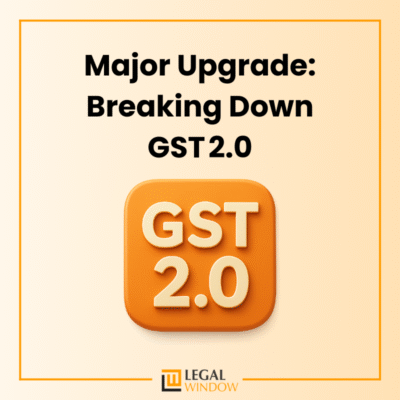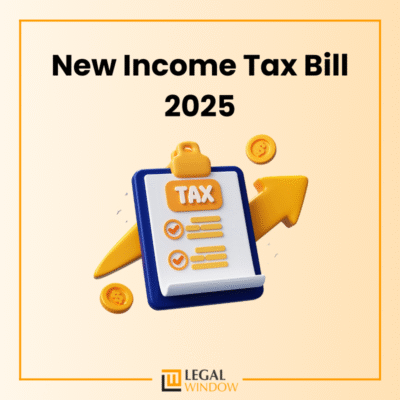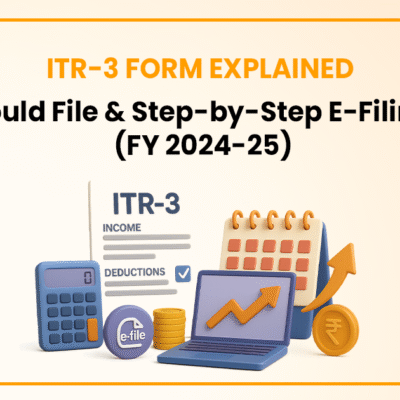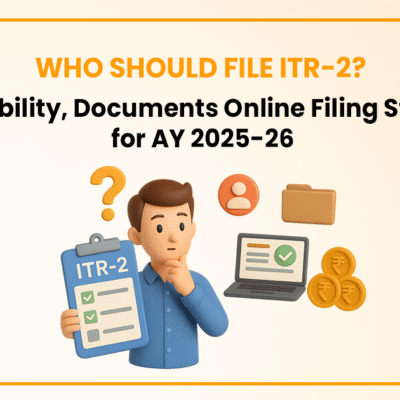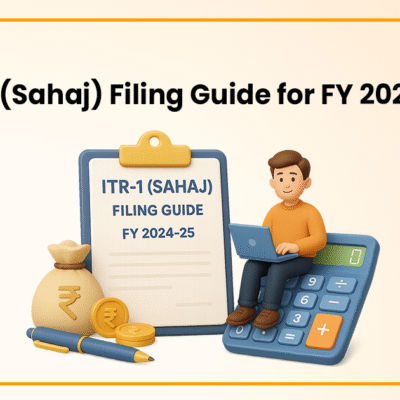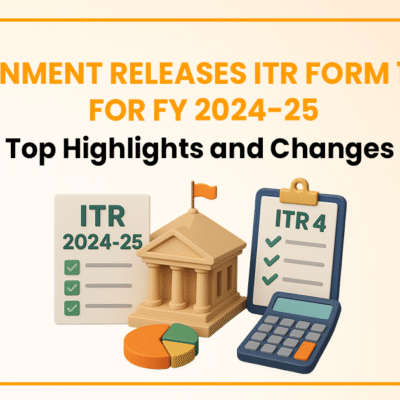Updated Return – Comprehensive chart from AY 2020-21 to 2022-23
- March 14, 2023
- Income Tax

An updated return, also known as a revised or amended return, is a type of tax return that taxpayers can file to correct errors or omissions in their originally filed return. The updated return allows taxpayers to make changes to their previously filed tax return after it has been submitted to the tax authorities. In the context of GST (Goods and Services Tax) in India, an updated return refers to a revised GST return filed by a registered taxpayer to correct any discrepancies or errors in their previously filed return. The GST Council has prescribed various return filing requirements for GST-registered taxpayers, including regular monthly or quarterly returns, annual returns, and reconciliation statements. If a taxpayer identifies any mistakes or discrepancies in their return after filing, they can file an updated return to correct those errors. This article will discuss the Updated Return AY 2020-21 to 2022-23.
| Table of Content |
Some glimpses related to the Updated Return
An updated Return is a Form used for upgrading the Income Tax Return (ITR) within 2 years from the end of the year in that original return is filed. The government introduces the term of updated returns u/s 38 of Finance Act, 2022. An updated return, also known as a revised or amended return, is a type of tax return that taxpayers can file to correct errors or omissions in their originally filed return. The updated return allows taxpayers to make changes to their previously filed tax return after it has been submitted to the tax authorities.
In the context of GST in India, an updated return refers to a revised GST return filed by a registered taxpayer to correct any discrepancies or errors in their previously filed return. The GST Council has prescribed various return filing requirements for GST registered taxpayers, including regular monthly or quarterly returns, annual returns, and reconciliation statements. If a taxpayer identifies any mistakes or discrepancies in their return after filing, they can file an updated return to correct those errors.
The process of filing an updated return may vary depending on the tax jurisdiction and the type of tax return being filed. In India, taxpayers can file an updated return under certain circumstances, such as when they discover an error in their previously filed return or when they need to make adjustments due to changes in their business operations. It is important to note that late filing of an updated return may result in penalties or interest charges.
Who can file an Updated Return?
Any person who has omitted any income or made mistake in filing any of the following returns can file an updated return:
- Original return of income, or
- Belated return, or
- Revised return
Below mentioned persons cannot file Updated Return: -
- Already file Updated Return
- Nil return/ loss return
- When Updated Return results in lower tax liability
- If amount of refund is increased
- Pending or completed the assessment/ reassessment/ revision/ re-computation
- If no additional tax outgo
- Begin the search proceeding as per section 132
- Books, assets, or documents seized or called upon by the Income Tax Authority as per section 132A
- Conduct survey as per section 133A
Purpose of Updated Return of Comprehensive Chart for AY2020-2021 to2022-2023
The purpose of an updated return is to correct any errors or omissions in the original tax return filed by a taxpayer. The updated return provides an opportunity for taxpayers to ensure that their tax liability is accurately calculated and reported to the tax authorities. Here are some specific purposes of filing an updated return:
- Correct Errors: One of the main purposes of filing an updated return is to correct any errors or omissions in the original tax return. This can include errors in the calculation of tax liability, incorrect reporting of income, or failure to claim deductions or credits that the taxpayer is entitled to.
- Reflect Changes in Circumstances: Taxpayers may need to file an updated return if their circumstances change after the original return is filed. For example, if a taxpayer receives additional income or incurs additional expenses that were not reflected in the original return, they may need to file an updated return to reflect these changes.
- Claim Refunds: Filing an updated return can also allow taxpayers to claim refunds for overpayment of taxes. If a taxpayer discovers that they have overpaid their taxes after filing the original return, they can file an updated return to claim the excess amount as a refund.
- Compliance: Filing an updated return is an important aspect of tax compliance. By filing an updated return, taxpayers can fulfil their legal obligations and avoid any legal or regulatory issues related to tax filings.
The benefit of an Updated Return
The benefit of filing an updated return is that it allows taxpayers to correct errors or omissions in their original return, ensuring that their tax liability is accurately calculated and reported to the tax authorities. Here are some specific benefits of filing an updated return:
- Avoid Penalties: Filing an updated return can help taxpayers avoid penalties for incorrect or incomplete filings. In many cases, tax authorities may impose penalties for late or incorrect returns, but by filing an updated return, taxpayers can avoid or reduce these penalties.
- Accurate Tax Liability: By filing an updated return, taxpayers can ensure that their tax liability is accurately calculated and reported to the tax authorities. This can help prevent overpayment or underpayment of taxes.
- Compliance: Filing an updated return is an important aspect of tax compliance. It helps taxpayers fulfill their legal obligations and avoid any legal or regulatory issues related to tax filings.
- Reduced Risk of Audit: An updated return can help reduce the risk of a tax audit. By correcting errors or omissions in their original return, taxpayers can demonstrate their commitment to compliance and reduce the likelihood of being audited by the tax authorities.
Comprehensive Chart in relation to Updated Return from AY 2020-2021 to 2022-2023
| A.Y. | Late fee if total income | Additional Tax U/s 140B | Last Date to File Return | |||
| Up to Rs 5 Lakhs | Above Rs. 5 Lakhs | 25% | 50% | |||
| A.Y. 2020-21 | 1,000 | 10,000 | No Option | From 01/04/2022 to 31/03/2023 | 31/03/2023 | |
| A.Y. 2021-22 | 1,000 | 5,000 | From 01/04/2022 to 31/03/2023 | From 01/04/2023 to 31/03/2025 | 31/03/2024 | |
| A.Y. 2022-23 | 1,000 | 5,000 | From 01/04/2023 to 31/03/2024 | From 01/04/2024 to 31/03/2025 | 31/03/2025 | |
Takeaway
Overall, filing an updated return can help taxpayers avoid penalties, ensure accurate tax liability, and maintain compliance with tax laws and regulations. It is important for taxpayers to understand the requirements for filing updated returns and to file them promptly when necessary. The purpose of an updated return is to ensure that taxpayers accurately report their tax liability and comply with tax laws and regulations. It is important for taxpayers to understand when an updated return is necessary and to file it promptly when required. It's important to note that an updated return must be filed within a certain period of time, typically within the same financial year as the original return. Late filing of an updated return may result in penalties or interest charges.
Company Secretary and diligent learner deeply immersed in the world of corporate law, compliance, and governance with a focus on developing a robust foundation in legal principles and corporate practices. Passionate about exploring the intricacies of company law, regulatory compliance, and corporate governance.
Categories
- Agreement Drafting (23)
- Annual Compliance (13)
- Change in Business (37)
- Company Law (150)
- Compliance (90)
- Digital Banking (3)
- Drug License (4)
- FEMA (17)
- Finance Company (42)
- Foreign Taxation (9)
- FSSAI License/Registration (15)
- GST (124)
- Hallmark Registration (1)
- Income Tax (214)
- Latest News (36)
- Miscellaneous (170)
- NBFC Registration (8)
- NGO (18)
- SEBI Registration (6)
- Section 8 Company (10)
- Start and manage a business (27)
- Startup/ Registration (134)
- Trademark Registration/IPR (48)
Recent Posts
- Major Upgrade: Breaking Down GST 2.0 September 15, 2025
- New Income Tax Bill 2025 August 27, 2025
- ITR-3 Form Explained: Who Should File & Step-by-Step E-Filing Guide (FY 2024-25) June 25, 2025
All Website Tags
About us
LegalWindow.in is a professional technology driven platform of multidisciplined experts like CA/CS/Lawyers spanning with an aim to provide concrete solution to individuals, start-ups and other business organisation by maximising their growth at an affordable cost.


